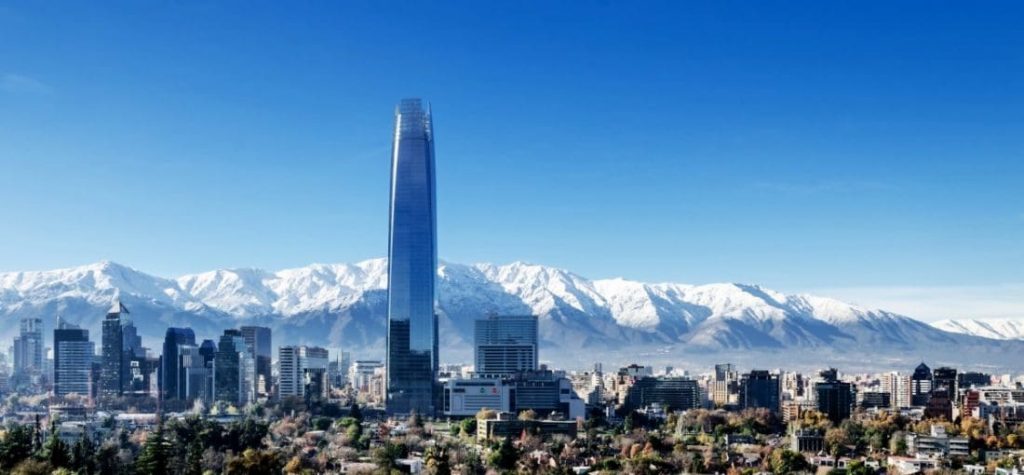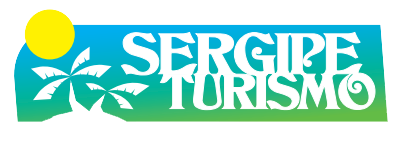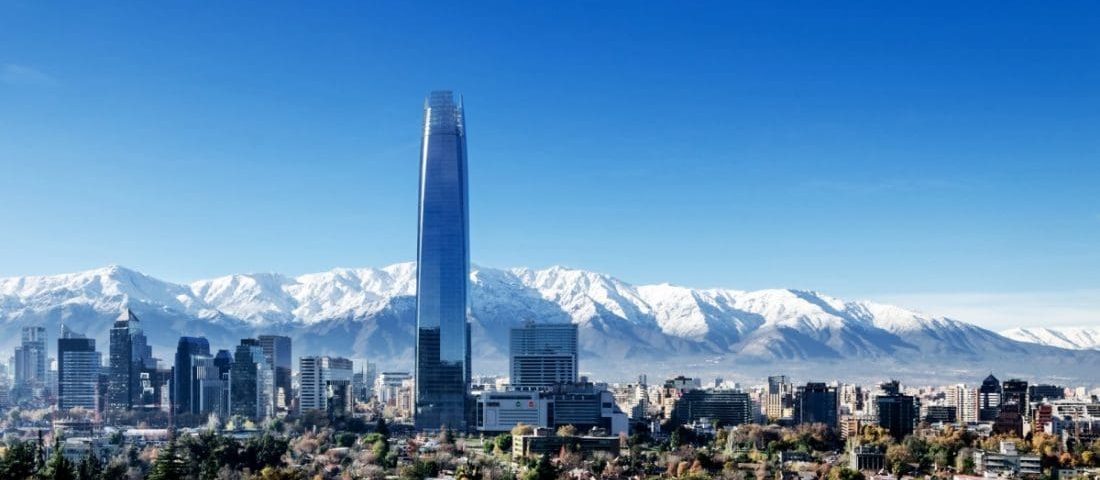Bike tours, good food, viewpoints with beautiful landscapes … these are just some of the many interesting tour options to do in Santiago de Chile. Check out the script we have prepared for you
Two-day itinerary in Santiago, Chile

Before traveling to Santiago or other regions of Chile, be aware of the special protocols for post-pandemic reopening established by Turismo de Chile. The technical specifications of the protocols were prepared by the Ministry of Economy of Chile following all the recommendations of the Ministry of Health of the country, which validated the protocols, and also of the international organizations of the tourism sector. Check out:
Accommodation and restaurants
The protocol for tourist accommodation establishments includes recommendations on the availability of hygiene materials at various points in the establishment, cleaning and thorough hygiene processes, measures that guarantee physical distance between guests, elimination of the buffet service and even a guide on isolation from possible positive cases of Covid-19 in travelers or employees.
In the case of restaurants, the recommendations are similar in terms of adopting strict cleaning and sanitation measures, but they also have a specific guide for entering and leaving the premises, for the care and arrangement of tables and for kitchen management and handling. food, in addition to new practices when serving the customer.
Wineries, Ski Resorts and Events
Tourism authorities pointed out that, in a second stage, recommendations will be made available for more specific segments of Tourism, such as ski centers, corporate events, travel agencies and tour operators, tour guides, adventure tourism, rural tourism, wineries and environmental protection areas open to tourism.
Traveling to Santiago de Chile
Anyone going to Patagonia or Atacama will inevitably pass through Santiago airport. Therefore, dedicating at least two days to the capital of Chile, either on the way or on the way back, is a good idea to get to know the classic attractions. And with a little more time, why not stretch to the wineries in the nearby Casablanca Valley?
Day 1
In a flat city like Santiago (and especially on an express trip), a guided bicycle tour is great for “recognizing terrain”. Thus, we will pass, even if quickly, through the main attractions – despite the bad traffic in some points and the lack of bike path in others. BellaBike tours, for example, last about three hours – at 10:30 am, we are ready to leave, in front of the company’s kiosk in the Bellavista neighborhood. Regulated bikes, helmets ready, Portuguese speaking guide at the front and off we go.
First, we wander through the popular shopping streets of the neighboring neighborhood of Patronato until we reach La Vega. There we are invited to get off the saddle and walk through this market filled with stalls of fruits, meats, spices, sausages… A nice contrast in relation to the next stop: the famous Central Market, national heritage because of its cast iron architecture, 1872.
The tents are essentially of fish and seafood, which also dominate the menu and showcases of the complex’s restaurants. The big star is the centolla, a giant crab typical of the Pacific. If you are looking for something very touristy – and expensive – you can come back here for lunch after the ride. But it is good to know: it will not be the best value for money, nor the best gastronomic experience of the trip.
Plaza de Armas and more
Let’s move on. From there, the guide takes us to the historic center of the capital. Everything revolves around the Plaza de Armas, which dates back to the foundation of the city as a Spanish colony in 1541. Surrounding it are important buildings, such as the Royal Palace (which now houses the free National Historical Museum) and the Metropolitan Cathedral, from 1748 – in the latter, there is a quick stop for photos.
We then go to the Palace of La Moneda, seat of the Chilean government, standing since the 18th century. It was the scene of the coup that, overthrowing Salvador Allende in 1973, started a 17-year dictatorship. In fact, for those who are interested: come back later to participate in the guided tours, which must be booked in advance on the internet.
To learn more about the Chilean dictatorship, include in your itinerary a free visit to the Museum of Memory and Human Rights, which honors victims and their families with collections of photos, newspaper articles, letters and photographs. There are also multimedia resources, such as audiovisual panels and recordings of the time. museodelamemoria.cl, Quinta Normal metro station
The pedaling continues, now through the charming streets of the Paris-London neighborhood, reminiscent of Europe, and passes through the Santa Lucía and San Cristóbal hills (we’ll talk about them later). Cross the Parque Forestal to end at the same point where we left, in Bellavista.
An open-air art gallery
End of the tour, bikes returned, farewells made, hunger throbs: whoever is not in the mood to return two kilometers to the Central Market, can simply cross the street and enter the Patio Bellavista, a kind of open-air gallery with craft shops and restaurants. Barrica 94, for example, has typical food: choose between the pastel de choclo (a kind of corn and meat hideout), the salmon cancato (with sausage, cheese, tomato and onion) or the fish humitas (type pamonha ).
Do not overdo the wine, which is to be able to walk 600 meters to the next stop: the La Chascona Museum, home of the poet Pablo Neruda. In Portuguese, the audio guide helps contextualize the tour of the residence where the writer lived with his third wife, Matilde, until his death in 1973. It is possible to see items from his personal collections, ranging from furniture to works of art – not to mention in the architecture itself, in the shape of a boat and full of “crazy things”.
Contact with nature
In the late afternoon, it’s time to relax in Parque Metropolitano, among the largest urban green areas in the world – there is an entrance right there, close to Chascona. In addition to bringing together a zoo, botanical garden, observatory, trails and swimming pools, the park also includes Cerro San Cristóbal, one of the hills that make up the Santiaguina landscape.
The most traditional way to get to the top is by funicular – the views from up there are enchanting, revealing the city framed by the Andes. The novelty is that, to descend, we take the cable car, reopened last November, after more than seven years in renovation.
Leaving through the Pedro de Valdivia Norte access, the day ends in the Los Condes area, close to the Metropolitan Park. By taxi or Uber, there are two program options for tonight. One of them is the Hotel W, which has the NoSo restaurant (a mix of French and Mediterranean cuisine, focusing on fresh seafood) and Osaka (Oriental / Peruvian cuisine). For cocktails with a view, the bar is the rooftop, Red 2 One, next to the pool. The other idea, especially for those who prefer to invest time in shopping, is Parque Arauco, Brazil’s favorite mall, with more than 350 stores, including Nike, Tommy Hilfiger, Gap and more.
Day 2
On yesterday’s ride, we passed a series of museums, listening to brief explanations from the guide. Now, this morning, it is time to visit one or more. I would fill the morning with two of them, but the choice is yours: the Chilean Museum of Pre-Colombian Art, for example, has a large collection on the ancient American peoples, while the Museum of Beautiful Arts, free of charge, displays works from Chile, from Europe and Africa – on the side, the Museum of Contemporary Art can be an alternative for those who prefer to see works from the 20th century, like a sculpture by Fernando Botero right at the entrance. The Gabriela Mistral Cultural Center brings together, in a modern building, art exhibitions and presentations of music, theater and dance.
These museums are all no more than 1.5 kilometers from the lunch stop: the restaurant at the Luciano K hotel, in an art deco building from the 1920s, which preserves several original elements, such as the wooden floor and the stained glass doors. On board the first elevator in Santiago, still preserved, you go up to Terraza K. There, on the roof, the beautiful view accompanies the tapas menu, such as garlic prawns, empanadas, smoked trout, carpaccio and ceviche.
Walk in the park
Then, stretch to Cerro Santa Lucía, a hill much lower than San Cristóbal, but with a nice park to cure the softness of pisco sour spilled at lunch – you only need to be willing to climb a series of steps. Right in front of the hill, there is a craft fair, ideal for buying typical products, such as ponchos woven with alpaca wool, items made of copper, jewelry with lapis lazuli and indigenous art.
Metro line 1 takes us to the next and final stop on this itinerary – schedule to arrive in the late afternoon. That’s when, at sunset, you have the best view at the Sky Costanera viewpoint, the highest in Latin America, on the 61st floor of the Gran Torre Santiago. At 300 meters high, the 360-degree panorama is incomparable: the entire layout of the city is understood, at the foot of the Andes.
Back on the ground, take the night to shop at the attached mall, which has stores like H&M, Forever 21, Falabella and TopShop, or dine – the Costamia restaurant serves fish and seafood around a large aquarium. Santiago (re) known, just embark on the next stage of our trip through Chile. Which will be yours: Patagonia or Atacama?
Where to stay in Santiago
The capital of Chile has a wide variety of accommodation and a good tip is the Hotel Casa Real – Viña Santa Rita. As the name says, it is located inside the Santa Rita vineyard, one of the oldest wineries in Chile.
Its 16 rooms have a neoclassical style, overlooking the gardens and the pool. In addition, the hotel is surrounded by a 40-hectare park designed by French landscaper Guillermo Renner, with a lagoon and Roman baths. Finally, you can visit the Andean Museum and participate in various wine activities. Book here.
Another good tip is to stay in the Bellavista neighborhood. with its graffiti and plenty of restaurant options. The Bellavista Costanera hotel, for example, has a good location, as it is just 500 meters from the metro. In addition, the hotel is just 1.3 km from Cerro Santa Lucia and 2.5 km from the Museum of Pre-Colombian Art.

